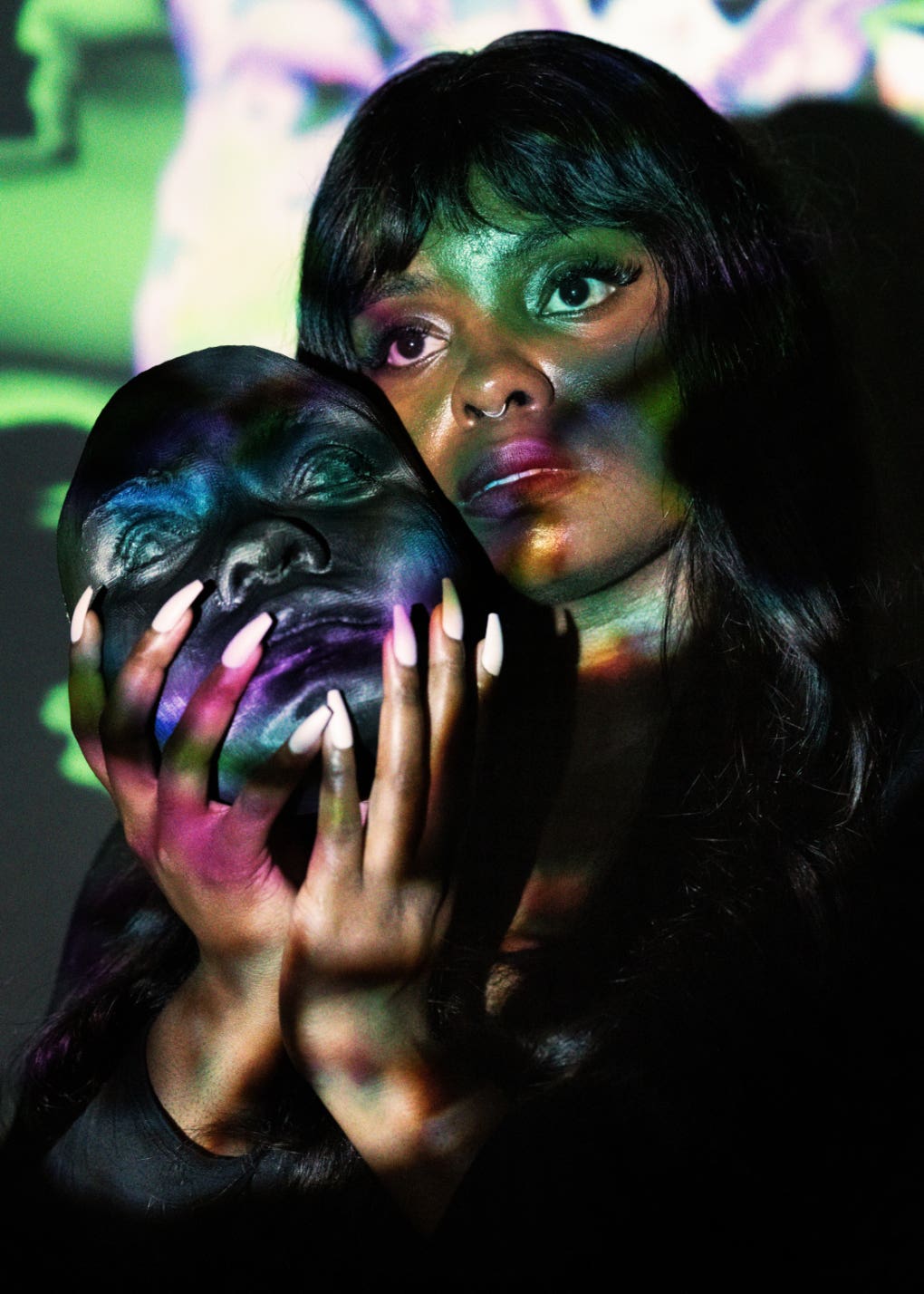Self Portrait 14 simultaneously occupies both digital and physical space, prompting the question: what worlds must be built for the liberated body to exist? How can we care for these liberated bodies both in and outside the digital realm?
“I’m hoping this work shows the reality that’s not seen, which is a reality that is full of color, full of freedom, full of liberation. I see magic in my everyday experience. Magic is all around me. It has uplifted me, and has blessed me to be able to experience the beauty in what it means to be free.”
Through their artwork, McMillian reveals the glitches of society and its technology, seeking to understand who a person is in the systems we live in today. They constantly question, what does it mean to access liberated technologies, and embodied technologies, to manifest the world they want to see?
The biased technology used for scanning and identifying people, McMillian explains, is not designed to pick up our full humanity, and embodied metadata—a term coined in their workshops to describe the data about the data our bodies produce, which help to define the fullness of our lives. They are concerned with how this full humanity is seen, represented and acknowledged in the digital sphere. They therefore seek to create portals: opening them, celebrating them and protecting them.
The resulting portraits manifest self healing, self actualization, and commitment to growth. McMillian believe that to hold that space for others, they must first hold it for themself.
In Self Portrait 14, the artist’s face first becomes malleable, and distorts into otherness. To McMillian, this is a metaphor for our preconceptions of what it means to be human, how it might be more than we think it is.
“The digital technologies I use are inherently biased and racist. They aren’t made for me, they aren’t made to see my body. Yet our tools and technologies reflect the societies we live in. What does it mean to use tools that were not meant to see you?
Using a body that is not supposed to be seen in these spaces is a way to hack, resist, and push forward the sort of world I want to see.
The world tells us that we can’t have that, that you can’t experience true freedom or true liberation. I just think that that’s a lie. I’m hoping when people experience this work, it will allow them to go on that journey themselves, seek that inner peace, inner knowledge, and inner freedom, so they can live their everyday lives to the fullest.
My hope as an artist is to help other people tap into this second, liberated, magical world, through my work and hearing about my journey.”
What is birthed from that process is this second world, a more liberated world. McMillian explains, “It’s like we’re experiencing dual realities at the same time.”
The digital video is accompanied by a 3D printed self portrait. “This work is real. It’s tangible,” says McMillian. “It’s challenged me to bring magic realism into the physical space in a way I haven’t done before. This is just the beginning for me.”
In the future, they plan to continue experimenting with new mediums and technologies to create more avatars of themself. What does it mean to create a body using software?
“I’m creating a toolbox, a tech playground,” they explain. “As I get more access, I plan to push those tools and technologies to the limit.
I use these digital tools to visualize the experience I’m already having inside my body so that people can experience that with me. If I can digitize myself in a loving, caring, expansive way, then I can do that for other people. To be able to witness others, you have to be able to witness yourself.”
In this way, McMillian’s Self Portraits expand what it is to be a world-builder. How are hierarchies built into softwares and tools, and how do they force us into world-building in a specific way? And how can we expand outwards, resist and reject that?
“Just because the tool wants me to world-build that way, I don’t have to world-build that way. I can actually world-build in a different way. What does it REALLY mean to unsubscribe? If you stop believing in these hierarchies and biases, what world is put in place of that?”
Note on Process:
McMillian had their face scanned at NYU Laguardia studio and they used the Artec Spider ($24,000) and Artec Eva ($9,800). The 3D prints were printed at Pioneer Works.
They used Unreal Engine and Premiere Pro to create embodied metadata, creating effects that appear to smudge, liquify, and expand their face. The resulting data that isn't easily recognizable or perceived by the machine or society. This complicated data they compare to how NFTs produce metadata, which makes it "one of a kind."
